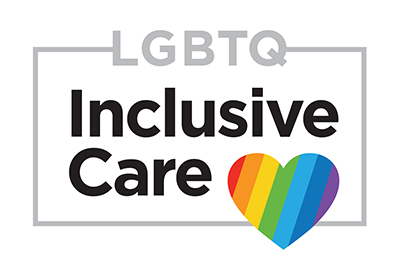Trigger warning: domestic violence, sexual assault, suicide
When we got the call from Chrissy, she had just been sexually assaulted, choked, and then chased down by her abusive ex-boyfriend, Matthew, by car when she ran to escape. She was shaking, terrified, and confused about how someone she loved could do this.
Chrissy and Matthew had dated for nearly a year. Their relationship started off like any new relationship – exciting, loving, and fun. They moved in together and spent most of their free time with each other. They hosted a housewarming party and enjoyed time with mutual friends and binge-watching TV shows. After a couple of months, though, things changed. Matthew became extremely jealous and paranoid. He began verbally abusing Chrissy and slowly using manipulation tactics to gain more control over her. He became so controlling and paranoid that when Chrissy needed to use the restroom – even in the middle of the night – he would follow her in there to ensure that she wasn’t texting other people.
Often in the early stages of abusive relationships, the abuse takes the form of verbal or emotional abuse or gaslighting. So often, the victim doesn’t realize it’s happening until it has escalated or become physical. It can sound like name-calling, constantly correcting someone’s behavior or yelling at, denouncing or demeaning someone. It can also take the form of prolonged silent treatment. In these instances, abusers are defining their partner’s/victim’s reality for them. Which is, in essence, insane. But people who experience it may just start to think, ‘I’m an awful stupid person. The effects of this self-worth tear-down tactic, combined with gaslighting statements like, “You’re being too sensitive” or “That never happened, you’re crazy” can be psychologically destructive for years.
In Chrissy’s case, things were slowly becoming worse and worse. After she and Matthew had fights or altercations if she didn’t immediately and clearly act like things were “ok” he would become furious again, screaming, punching walls, and threatening her. At eight months into the relationship, she knew she had to get out before things got worse.
The time between altercations and Matthew losing control became shorter and shorter. But this time, Chrissy was done. She was strong and stood up to him. She told him she’d no longer be treated this way and that she was done. Matthew immediately began repeatedly punching her in the face until the blood on his hands encouraged him to stop.
When a victim leaves an abuser, she is 10x more likely to be killed.
Chrissy ran out and immediately reported to the police. She quickly moved all her belongings out of the apartment and moved in with her aunt over an hour away.
Chrissy settled into her new living situation and shifted her focus to work and her passion for art. She felt a fog lifting. But there were still so many conflicting emotions of being hurt, sad, and heartbroken – she loved Matthew. Matthew reached out multiple times through text and she decided she wanted things to end mutually and peacefully.
They texted back and forth for several weeks, seemingly coming to good terms, but ultimately remaining separated. Matthew apologized sincerely for his behavior and talked about how he was working to make changes in his own life. She still loved him, and she hoped that someday with growth that he could be a good partner.
We hear from many people who are in abusive relationships, and even those who have left relationships, but say that they love their abusive partner. They wonder, “Why do I love someone who has hurt me so much?” It can feel strange, confusing, and even wrong to love someone who has chosen to be abusive. While these feelings can be difficult to understand, they aren’t strange, and they aren’t wrong. Love isn’t something that just disappears overnight. It’s a connection and emotional attachment that you create with another person. Love comes with a lot of investment of time, energy, and trust. It’s not easy to just let go of a life you’ve built with someone, whether they’re abusive toward you or not.
Months later they ran into each other at the same party. Given their past, things seemed cordial. They said hello and made a bit of small talk while enjoying the company of mutual friends. During the party, Chrissy developed an excruciating migraine. It progressed quickly and significantly. Matthew noticed that she seemed unwell and asked her if she was ok. The apartment they had previously shared was nearby, where he still resided. He offered for her to go there to try and get a handle on it. Chrissy knew that there was no way she could make the hour-long drive back without some relief. At the time, given their previous conversation and interaction at the party, she felt safe and comfortable to try to recoup there.
When Chrissy arrived, she made herself comfortable on the couch, Matthew provided some pain relief medication and turned the lights off for her. Soon, he began to make sexual advances towards Chrissy. She firmly told him no. He then began to demand oral sex from her. She continued to say no and push him away. Her migraine became completely debilitating. Matthew refused to take no for an answer and pushed himself on her forcing her to perform oral sex.
He quickly became angry because Chrissy was “not into it” and she was clearly upset. Chrissy took this opportunity to leave the apartment, but Matthew grabbed her and told her she was not leaving, and threw her down on the floor. Matthews raging escalated and Chrissy was terrified. Each time she got up; Matthew would throw her back to the floor stating that “she didn’t make him feel like a man.” He began to strangle her with both of his large hands, she desperately gasped for air, tried to fight him off all while looking at the man she still loved… and thought she could trust.
In a violent relationship, the use of strangulation is a significant indicator of future lethal violence. Strangulation itself is one of the most lethal forms of domestic violence; unconsciousness may occur within seconds and death within minutes. It’s possible to experience strangulation and show no symptoms at first but die weeks later because of brain damage due to lack of oxygen and other internal injuries.
She began to lose consciousness and things started getting dark with only flashes of light. Thankfully, he finally stopped. He picked her up off the floor by the back of her neck and threw her on the bed face down, pulled her leggings down, and raped her. She screamed “no” repeatedly and begged him to stop. She recalls having intense conflicting thoughts in her mind and she questioned if she was truly being raped since she still loved him and had consensual sex with him in the past. When he finished, he went to sleep holding her against the wall so that she couldn’t leave.
The next morning, he got up as if nothing happened. He got ready for work as usual. Chrissy’s migraine was replaced with fear, shame, and bruising around her neck. Matthew got angry with her because she wasn’t acting as if everything was ok. She dared not move off the bed, unsure of what he may do next – hoping he would soon leave for work. He demanded her to give him a blowjob before he left and she replied with strength and tears stating, “absolutely not” and began gathering her things so she could get out. As she tried to leave, he slammed her face into the wall, grabbed her necklace, and begins strangling her with it.
Again, thankfully, he did let go and proceeded to storm out of the apartment for work. As he was strangling her, she noticed a bottle of liquid Xanax out of the corner of her eye that he’d clearly been abusing. She grabbed the bottle and ran out the door. When she got to the car she noticed drops of blood all over her neck and chest and realized the necklace had cut her when he strangled her last. Driving away, hoping to never see him again, she threw the drugs out of the window.
Meanwhile, Matthew realized her forgot his drug bottle and quickly turned around to go back to the apartment. When he saw the bottle was gone off the nightstand, he bolted out of the door in a fit of rage to chase Chrissy down, knowing she must have taken it when she left. Chrissy had just begun pulling out of the neighborhood when he caught up to her. Matthew sped up to Chrissy’s car and she realized that it’s him behind her. Matthew begins bumping her car from behind. Chrissy is terrified. She attempts to get away, both reaching speeds near 80-100mph. He crashes into her car from the back and the side which forced her off the road.
He had her trapped in a cul-de-sac and ran up to her car, banging on her window repeatedly, and threatening to bust the window and kill her. “You bitc* I know you took that from me!” he screamed. In an effort to calm him down, she reminds him that she has a prescription for anxiety medication and said she would make him a deal that if he would meet her in a public place where she could better ensure her safety that she would give it to him. He agreed. As he went to get back in her car Chrissy sped away, breaking free of him, and drove back to her aunt’s house over an hour away as quickly as she could.
When she arrived at her aunt’s house, she immediately called 911. The operator heard that it took place in a different city, and she stated she couldn’t help and promptly hung up.
Chrissy’s aunt drove her back to seek help from the police in Murfreesboro – where the assaults had taken place. During their drive, Chrissy begins to receive text messages from Matthew… the first one was a picture of a bullet. The next was a picture of a gun… and then shortly after a video was sent of him putting the gun in his mouth. She frantically called 911 again, now almost back in Murfreesboro, and tells them about the pictures and suicide threats. The police get there just in time and arrest Matthew at the scene.
In abusive relationships, it is not uncommon for the abuser to weaponize suicide threats as a way to control victims. The abusive partner is trying to manipulate the victimized partner by playing on their feelings of love and fear for them in an effort to give in to their demands in order to avoid a potential tragedy.
Chrissy continued to the police department to file a report. When the police saw the bruises and cuts from the strangulation, they called EMS to ensure that there was no immediate threat of significant injury and cause for a visit to the emergency room.
The police then put Chrissy in contact with our facility – Domestic Violence & Sexual Assault Center (DVSAC). An Advocate immediately met with her to file for a legal Order of Protection against Matthew for sexual assault and domestic violence.
Orders of Protection are a “stay away/no contact order” issued by the Court. They are civil in nature but have the potential to become criminal matters when the Respondent (abuser) violates the order. Orders of Protection are intended to stop imminent acts of violence between parties with some type of intimate relationship.
This was only the beginning of a long road of justice and healing for Chrissy.
At the DVSAC, she worked with Court Advocates, Sexual Assault Advocates, and Counselors to navigate the legal process and to begin processing the trauma she had endured.
Matthew continually violated the Order of Protection by calling her from jail. He was constantly telling her that he loved her and begging her to do whatever was needed to make these charges go away. This only complicated her emotional response to all that she was navigating but, the thing about Chrissy – she is strong, she is smart, and she is resilient. She recorded all of the calls that came through and reported them to the Sheriff’s department resulting in him losing all phone privileges while in jail.
Matthew remained in jail, without bond, and just when she began to feel safe, something terrible happened. A clerical error occurred, and he was released from jail.
Through tears, fear, and frustration she could not understand how this could happen. She continued to work with Advocates at our center, utilizing safety planning and crisis counseling, while remaining in hiding. Thankfully, after a long 4-days, law enforcement had him arrested and put back into jail.
For the next 2 years and 7 months, Chrissy is fighting for this case. Yes, you read that correctly; nearly THREE YEARS. During the process, she learns of another ex-girlfriend who also decided to prosecute Matthew for the same crimes, in another county. This confirmed that she knew she was doing the right thing to prosecute Matthew for what he’d done. She never wanted there to be another victim.
Chrissy’s case finally makes it to trial. She didn’t let any friends or family come. She felt so weak and scared for so long. She wanted to do this very big thing bravely and on her own in an effort to prove to herself that she is the strong woman she always knew she was. With her counselor and advocate alongside her, she successfully testifies against Matthew while undergoing re-traumatization by the grueling defense.
Many victims of relationship abuse and sexual assault never make it to trial. Often the re-traumatization and years spent fighting to prosecute outweigh the benefit of continuing to move forward with the case. Out of every 1,000 rapes, only six rapists will ever spend a day in jail.
For Chrissy, something incredible happens; he gets convicted of aggravated rape and aggravated assault. He will be sentenced to maximum jail time. He will never have the opportunity to threaten, belittle, abuse or rape her or anyone else again.
How does it feel to prosecute an abuser after years of fighting? Initially, Chrissy felt so much relief and a sense of freedom she hadn’t felt in a long time. A massive weight had been lifted. But, reliving the trauma over and over and over during this process was especially difficult and painful.
Now, her healing journey can continue. The effects of trauma may be life-altering. Survivor’s perceptions of themselves and the world around them may shift and many will experience physical and emotional challenges in the aftermath. Chrissy continues to utilize our counseling services of trauma-focused therapy in her recovery process so that she can safely and confidently face the challenges that come with growth and healing.
Chrissy is a SURVIVOR.
Being a trauma survivor is a challenging journey, but it can also be an empowering one. By sharing stories of Hope & Healing we aim to stand in solidarity with all who have experienced domestic or sexual violence, empower survivors, and validate each person’s unique story.





